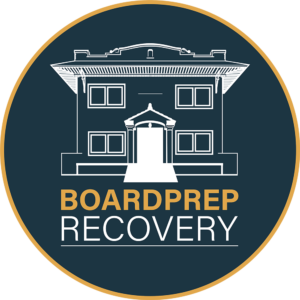An e-pamphlet recently published by the Substance Abuse and Mental Health Services Administration (SAMHSA) simply titled, “Buprenorphine,”[1] provides anyone seeking treatment for an opioid use disorder (a.k.a., chemical dependency/addiction to opioids) with a clear description of this FDA-approved medication, including how it can be a powerful ally in one’s recovery.
Often prescribed as part of medication-assisted treatment (MAT) for opioid use disorders, buprenorphine is best viewed as “part of a comprehensive treatment plan that includes counseling and other behavioral therapies to provide patients with a whole-person approach.”[2] And since can either be part of a treatment center’s protocol or prescribed and dispensed in a physician’s office, buprenorphine substantially increases one’s access to treatment.
How does it work? Being an opioid partial agonist, buprenorphine—at low to moderate doses—generates effects such as euphoria or respiratory depression, yet less intense than full opioid agonists like heroin or methadone. Indeed, buprenorphine is both safe and effective medication, if taken as prescribed. Here (see below) are some of the pharmacological benefits it can provide:
- Diminish the effects of physical dependency to opioids, such as withdrawal symptoms and cravings
- Increase safety in cases of overdose
- Lower the potential for misuse[3]
Before starting treatment, a person with an opioid use disorder needs to have at least 12 to 24 hours of abstinence from opioid use, as well as be in the early stages of experiencing withdrawal symptoms – otherwise, one might go into acute withdrawal, which is much less safe or manageable.
Also, before commencing treatment, those struggling with an opioid use disorder are encouraged to meet with a doctor, addictions specialist or treatment center staff to learn about this medication in the context of other options for treatment that may be available.
Once a person has stopped or significantly decreased their use of opioids, doesn’t have cravings, and/or has no (or few) side effects, adjustments to his or her buprenorphine dose may be prescribed by the attending doctor. Since buprenorphine is relatively long-acting, once a person is stabilized, they may actually be moved from daily doses to alternate-day dosing.
Based on a person’s unique needs, the amount of time one receives buprenorphine will vary — with some, buprenorphine treatment may be prescribed indefinitely. SAMHSA’s guidelines suggest, in order “to prevent possible relapse, individuals can engage in on-going treatment—with or without MAT.”[4]
Some of buprenorphine’s most common side effects are listed below:
- Constipation, headache, nausea, and vomiting
- Dizziness
- Drowsiness and fatigue
- Sweating
- Dry mouth
- Muscle aches and cramps
- Inability to sleep
- Fever
- Blurred vision or dilated pupils
- Tremors
- Palpitations
- Disturbance in attention
Some of buprenorphine’s less common, yet more serious, side effects include:
- Respiratory distress
- Overdose
- Adrenal insufficiency
- Dependence
- Withdrawal
- Itching, pain, swelling, and nerve damage (implant)
- Pain at injection site (injection)
- Neonatal abstinence syndrome (in newborns).[5]
If you’d like more information about buprenorphine and its side effects or if you’re experiencing any side effects that are persistent and/or bothersome, contact your doctor or a pharmacist.
In the interest of safety, those using buprenorphine are strongly advised to adhere to the following precautions:
- Do not take other medications without first consulting your doctor.
- Do not use illegal drugs, drink alcohol, or take sedatives, tranquilizers, or other drugs that slow breathing. Mixing large amounts of other medications with buprenorphine can lead to overdose or death.
- Ensure that a physician monitors any liver-related health issues that you may have.
- Tell your doctor if you are pregnant or plan to become pregnant.
- Prevent children and pets from accidental ingestion by storing it out of reach.
- Dispose of unused methadone safely. Talk to your doctor or treatment center medical staff for guidance.
- Do not shared your buprenorphine with anyone, even if they have similar symptoms or suffer from the same condition.[6]
In summary, if you or someone you know is experiencing an opioid use disorder, help is available and buprenorphine may be part of a medically-assisted treatment plan that helps you (or someone you know) recover and start a new way of life, free from the ravages of opioid addiction.
[1] “Buprenorphine.” SAMHSA. May 14, 2021. (Can be found on SAMHSA.gov website.)
[2] Ibid.
[3] Ibid.
[4] Ibid.
[5] Ibid.
[6] Ibid.







